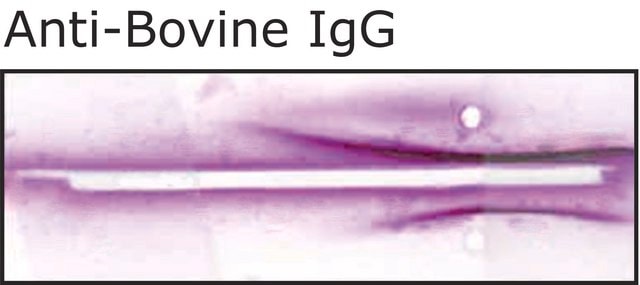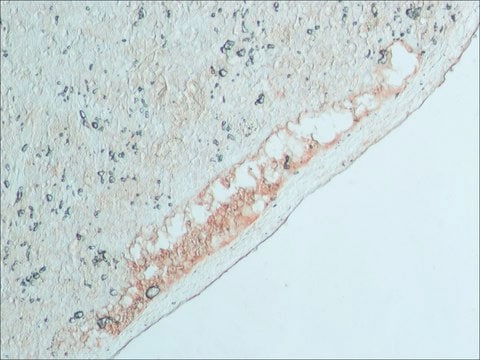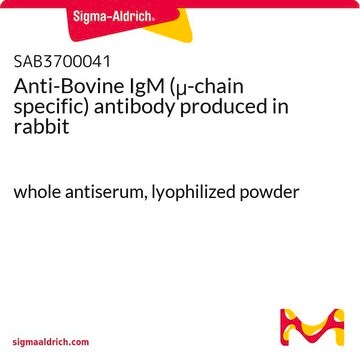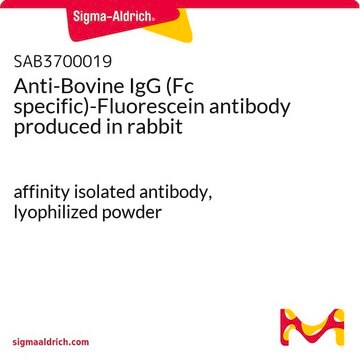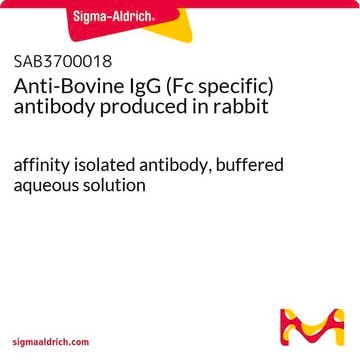SAB4200796
Anti- Bovine IgG-Peroxidase antibody, Mouse monoclonal
clone BG-18, purified from hybridoma cell culture
Sinónimos:
Bovine immunoglobulin G
About This Item
Productos recomendados
biological source
mouse
Quality Level
conjugate
peroxidase conjugate
antibody form
purified from hybridoma cell culture
antibody product type
primary antibodies
clone
BG-18, monoclonal
form
lyophilized powder
species reactivity
bovine
concentration
~2 mg/mL
technique(s)
direct ELISA: 1:20,000-1:40,000 using 1 μg/ml bovine IgG for coating
isotype
IgG1
shipped in
dry ice
storage temp.
−20°C
target post-translational modification
unmodified
General description
Immunoglobulin G (IgG) contributes to 10–20% of plasma protein and is regarded as one of the most predominant serum protein. It consists of four subclasses: IgG1, IgG2, IgG3 and IgG4. The IgG structure possesses four polypeptide chains containing two identical γ heavy (H) chains and two identical κ or λ light (L) chains of 50 kDa and 25 kDa, respectively.
Specificity
Immunogen
Application
Biochem/physiol Actions
Physical form
Storage and Stability
Disclaimer
Not finding the right product?
Try our Herramienta de selección de productos.
signalword
Warning
hcodes
Hazard Classifications
Skin Sens. 1
Storage Class
12 - Non Combustible Liquids
wgk_germany
WGK 2
Certificados de análisis (COA)
Busque Certificados de análisis (COA) introduciendo el número de lote del producto. Los números de lote se encuentran en la etiqueta del producto después de las palabras «Lot» o «Batch»
¿Ya tiene este producto?
Encuentre la documentación para los productos que ha comprado recientemente en la Biblioteca de documentos.
Nuestro equipo de científicos tiene experiencia en todas las áreas de investigación: Ciencias de la vida, Ciencia de los materiales, Síntesis química, Cromatografía, Analítica y muchas otras.
Póngase en contacto con el Servicio técnico